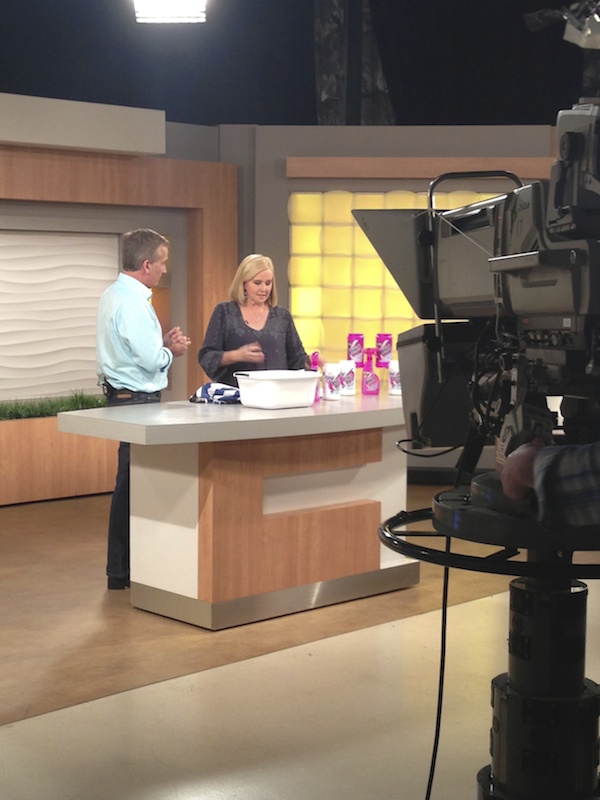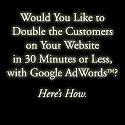

Partnering With Brands Theme Week: Ways to Collaborate and Earn an Income on Your Blog
Today we welcome Nikki Parkinson, from Styling You, to chat about brand work on blogs. Nikki switched a 20-year journalism career for forging a path online with her fashion, beauty and lifestyle blog. One of Australia’s best, she’s won numerous awards, travelled the world, and created a business she loves, right from her kitchen table. She’s actively worked with brands right from the start, and has enormous knowledge to share.
So you’ve been blogging for a while and have built up a solid readership and community because you consistently deliver useful/inspirational/entertaining content?
There is a fair chance if you have included a contact email address on your blog that before long an email from a brand, a PR or digital marketing agency, will land in your inbox.
You will either be surprised and delighted, or offended, that your little blog has been noticed by said brand.
It’s the surprised and delighted among you that I’m keen to talk to, because that first email could be the start of a potential commercial relationship.
That first email signifies that as a blogger you need to get very clear on your publishing guidelines.
Maybe you already mention brands as a matter of fact in your content. Maybe you haven’t. Either way, that all changes when someone is potentially asking you to mention their brand.
Only you can decide how you respond, but having a brand-publishing checklist in place will help you to make the decision that is right for you.
Brand publishing checklist
1. Is this a brand you already know, love, and use?
2. Is this a brand that you are confident that your readers either already know, love, and use or would like to know, love, and use?
3. Is this a brand that you could work in to your regular blog content in a way that is seamless? Not in a non-disclosed kind of way, more in a way that would not be out of place to what your readers expect from your style of content.
4. Does aligning yourself with this brand conflict with brands you’ve previously aligned yourself with?
5. Do you feel excited at the prospect of potentially working with this brand or does it give you an icky feeling? I know icky is not a technical term and can’t really be defined, but intuition or gut feeling is a great thing to draw on in this situation.
Working with brands
The PR pitch
Most – but not all – approaches from a brand or its agency will be for “earned” mentions on your blog. This is the traditional way that brands and their PR agencies have worked with mainstream media.
The idea here is that the PR is pitching you an idea that has some kind of newsworthy content or relevance to your blog’s audience. They are simply pitching and you do not at all have to publish anything just because they have emailed you. You may, however, find that what they are pitching could work as a part of particular blog post you’re working on, or have planned for now or in the future.
This is not something the brand would pay you to do. It is your choice when and if you choose to include the pitch on your blog. The same applies if the brand has sent you a product – unsolicited – to consider using or mentioning on your blog or social media networks. You are in no way obligated to feature the product.
Relationships
Many of my now paid commercial brand alignments have come from building relationships with brands directly or through their PR agencies. I’ve incorporated their products into my posts and have built up a relationship with that brand. The brand trusts what I do on the blog and they can already see how my readers respond to their brand.
I didn’t go into those early earned PR relationships thinking that one day I would be able to get a sponsorship from that brand, but I did start my alignment with those brands based on the five things I listed above on the brand publishing checklist. This ensured that the relationship was one I felt comfortable with from the beginning.
More and more PR companies are also including budgets for paid blogger campaigns as part of their contract with the brands they represent, so how you respond from those early approaches is becoming more and more important.
Also know that a PR pitch cannot specify to you when and how you publish content about the brand. They can’t tell you to use a certain hashtag, they can’t tell you that you need to publish a certain number of social media posts, and they can’t tell you what day you need to publish. They would NEVER ask a journalist to do the same because the only content in mainstream media that can be guaranteed is paid for – and it’s called advertising.
I see this approach happening more and more. And as a former journalist it really disappoints me. It gives the good PRs a bad name and assumes that the blogger will happily do as they are instructed without any remuneration for exposure to that blogger’s audience.
Events
One of the trends for ways in which brands engage with bloggers is through events. These events are either hosted by the brand and the brand’s PR invites selected bloggers to attend or the events are hosted by third party brand-blogger consultants who are contracted by brands to get bloggers along to the event in the hope of potential exposure.
Either way, a blogger’s decision to even accept an invite to an event can be seen as a brand alignment. Even if that blogger doesn’t publish any social media or blog posts, the blogger could be photographed by the brands or event organiser and therefore associated with the event and seen to be endorsing it.
Once again it comes back to the brand publishing checklist above. Consider if you are happy to be associated with the host brands or brands in any way before saying yes to attend.
And, like a PR pitch, a blogger should not be coerced or expected to post anything in return for attendance at the event. The should be free to do so if they want to, not because they’ve been invited. Just as a journalist would do.
Paid brand alignments
At some point in your blog’s growth you need to take stock and put a value on the time you put into your blog and the readership you have built. Once you’ve established a set value for your blog, I suggest you review this every six months or every quarter depending on the scale in growth of your readership.
Your readership is your currency when it comes to being appealing to brands. Brands mostly want to see the numbers. The number of unique visitors to your blog is the main number they’re looking at. Why? Because it’s the number that most equates to the numbers game of mainstream media. It’s the equivalent to circulation figures in print media and ratings numbers on TV and radio.
Clever brands and agencies will also look beyond the numbers to engagement and influence. They will also look at the demographics behind your numbers – particularly if they’re wanting to connect with readers in certain locations or of a particular age or sex.
When I talk to bloggers about valuing their time and their blog’s audience, it seems quite an arbitrary thing to suggest – and in many ways it is – but increasingly, bloggers are sharing what they are getting paid for brand alignments and this helps us all to establish that value.
I suggest that $ 150 should be the minimum payment for a sponsored post – and then bloggers should scale up according to their readership and influence.
Why $ 150? If you are working as a consultant then the minimum hourly rate is usually about $ 100 an hour. Most sponsored posts take longer than an hour and a half this to create and compile. For 5000-10,000 unique visits to your blog a month, you could charge $ 1550. For a blogger with 30,000-50,000 unique visits a month, $ 3000.
Ways to earn money from brand alignments
Sponsored posts: This is the most common form of commercial alignment between bloggers and brands. It works most successfully when the blogger is given creative control to write the post in the same way they would write a non-paid post to their readers. Keeping the authenticity of your voice is key – as is being upfront to your readers and labelling it as a sponsored post at the top. This is not a legal requirement, but it is practice that is very much worth embracing. You want to keep your readers, not dupe them. Being upfront has seen me grow my blog readership since I started writing sponsored posts – not have it disappear.
Social media posts: Being paid by a brand to promote their product or message via social media can be part of a sponsored post campaign or separate to it. One blogger talent agency has been reported as charging out up to $ 750 per brand mention on an Instagram image. With the growth of Instagram, particularly for fashion bloggers, this has become an attractive alignment for brands looking to harness its power.
Ambassadorships: Ambassadorships are the strongest way in which a blogger can align with a brand. They usually represent a long-term commitment between the blogger and the brand – six, 12 months or longer. This is a win for the blogger in regards to steady income, but it’s an alignment that needs to be fully considered before making because of the longevity of the association. A word of warning: many brands will try and “buy” bloggers as ambassadors with product only. Be careful with this because once you’ve received the ambassador title, you’ve more than cemented your alliance with that brand and don’t leave the door open for a commercial arrangement.
Television commercials: Bloggers are being included as the “talent” in television commercials and infomercials, usually as part of a wider sponsored post and social media campaign. This has come because audiences are proving more responsive to “real” people as opposed to celebrities or actors.
Blogging for a brand on their site: All bloggers know that good, solid content builds a blog’s readership. Brands have also realised that they too need good solid, relatable content on their sites to increase readership, brand awareness and sales through their sites. Who do they turn to? Bloggers who can not only create that content but bring an audience with them to the brand’s site.
Reader events: a win-win for bloggers and brands is when a blogger can offer something of value to their reader either through valuable/useful content or a giveaway. When that giveaway includes a chance to meet the blogger and attend an event that will add value or entertainment to the winning blog readers, then it’s proving to be a successful way for a blogger to align with a brand.
Event appearances: As I mentioned above, a blogger’s attendance at an event is a sign that the blogger is endorsing the brand. So it’s little wonder that bloggers can now obtain an appearance fee to attend an event. Often a certain number of social posts using a specific hashtag may be attached to this commercial arrangement.
The bottom line
Your blog hasn’t just appeared from out of thin air with a solid, influenced, and engaged audience. It’s taken long hours at the keyboard, dedication to your blog’s topic, and an extreme passion to communicate and connect with your readership.
You need to remember that whenever there is an opportunity presented to you to work or align yourself with a brand. Make good choices, disclose those good choices, and create brand content that still represents who you are and what your blog is about.
Do all this and your blog will continue to grow, as will your blog-business income.
Originally at: Blog Tips at ProBlogger
Partnering With Brands Theme Week: Ways to Collaborate and Earn an Income on Your Blog
Facebook comments:
No Comments »
No comments yet.
RSS feed for comments on this post. TrackBack URL
Leave a comment


















